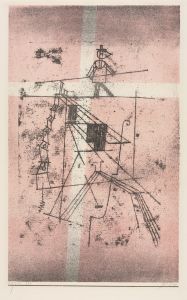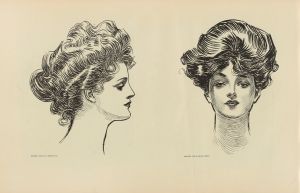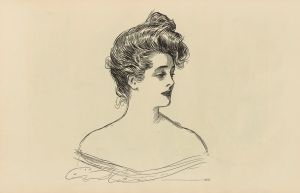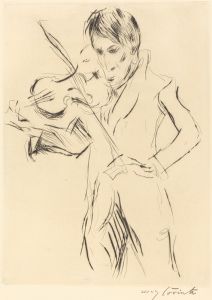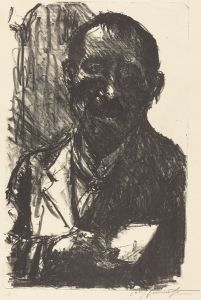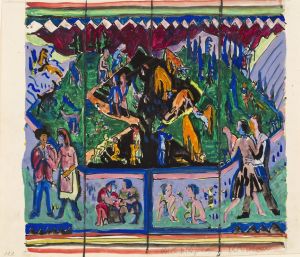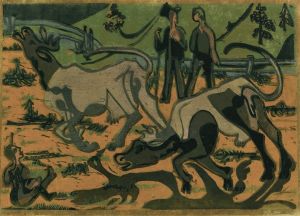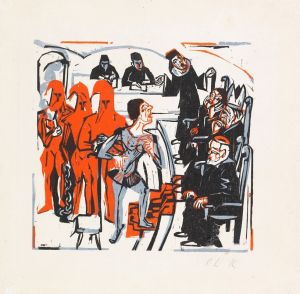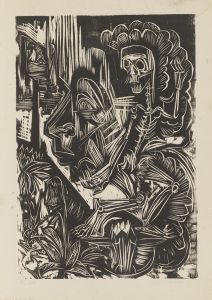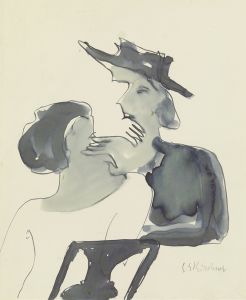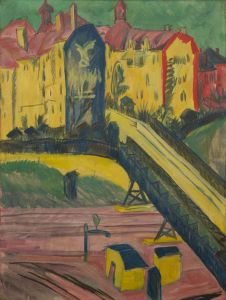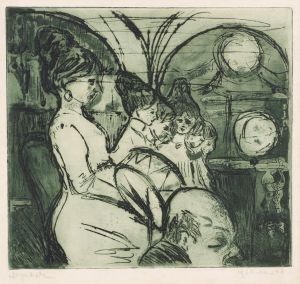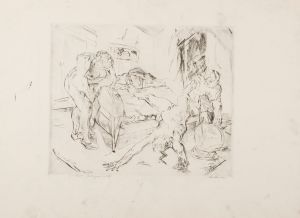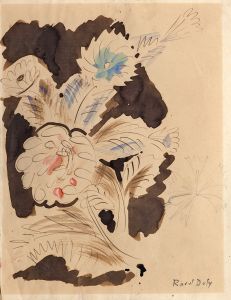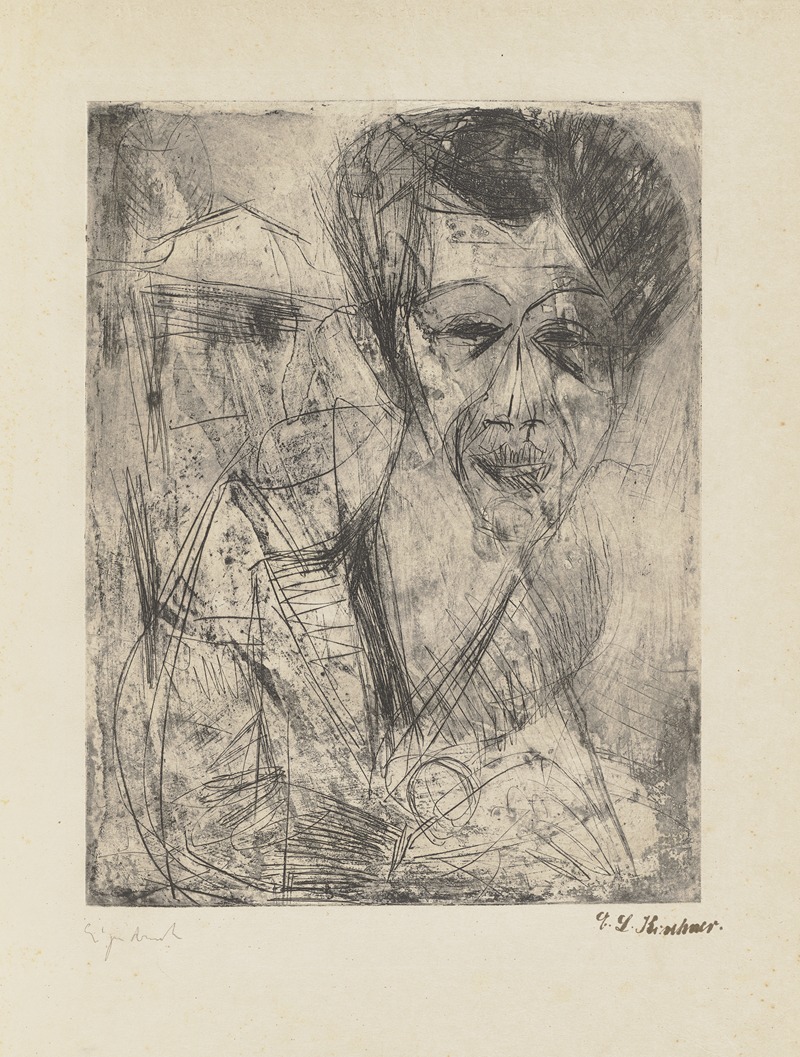
Selbstbildnis, zeichnend
A hand-painted replica of Ernst Ludwig Kirchner’s masterpiece Selbstbildnis, zeichnend, meticulously crafted by professional artists to capture the true essence of the original. Each piece is created with museum-quality canvas and rare mineral pigments, carefully painted by experienced artists with delicate brushstrokes and rich, layered colors to perfectly recreate the texture of the original artwork. Unlike machine-printed reproductions, this hand-painted version brings the painting to life, infused with the artist’s emotions and skill in every stroke. Whether for personal collection or home decoration, it instantly elevates the artistic atmosphere of any space.
Ernst Ludwig Kirchner, a prominent German expressionist painter and one of the founding members of the influential art group Die Brücke, created the artwork "Selbstbildnis, zeichnend" (Self-Portrait, Drawing) in 1910. This painting is a significant example of Kirchner's exploration of self-identity and his innovative approach to portraiture, which was a central theme throughout his career.
"Selbstbildnis, zeichnend" is an oil on canvas painting that reflects Kirchner's distinctive style characterized by bold colors, dynamic compositions, and expressive forms. The painting depicts Kirchner himself in the act of drawing, capturing a moment of introspection and artistic engagement. This self-portrait is notable for its vivid use of color and the energetic brushwork that conveys a sense of immediacy and emotional intensity.
Kirchner's work during this period was heavily influenced by the principles of Die Brücke, which sought to break away from traditional academic art and embrace a more spontaneous and direct form of expression. The group was inspired by various sources, including non-Western art, the works of Vincent van Gogh and Edvard Munch, and the desire to convey raw emotion and subjective experience. These influences are evident in "Selbstbildnis, zeichnend," where Kirchner employs a vibrant palette and exaggerated forms to express his inner state and the act of creation.
The painting also reflects Kirchner's interest in the psychological aspects of self-portraiture. By portraying himself in the process of drawing, Kirchner not only presents his physical likeness but also delves into the introspective nature of the artist at work. This approach aligns with the expressionist movement's focus on depicting the emotional and psychological depth of the subject rather than adhering to realistic representation.
"Selbstbildnis, zeichnend" is part of a broader body of self-portraits by Kirchner, through which he explored various facets of his identity and artistic persona. These works often reveal his struggles, ambitions, and the evolving nature of his self-conception. The self-portrait serves as both a personal reflection and a statement of artistic intent, highlighting Kirchner's commitment to exploring the complexities of the self through his art.
Throughout his career, Kirchner faced numerous personal and professional challenges, including the impact of World War I and his subsequent mental health struggles. Despite these difficulties, he remained a prolific artist, and his work continued to evolve until his death in 1938. "Selbstbildnis, zeichnend" remains an important piece within Kirchner's oeuvre, exemplifying his innovative approach to expressionism and his enduring influence on modern art.
Today, Kirchner's works, including "Selbstbildnis, zeichnend," are celebrated for their contribution to the development of expressionism and their profound impact on 20th-century art. His paintings are housed in major museums and collections worldwide, where they continue to be studied and appreciated for their bold exploration of color, form, and the human condition.





